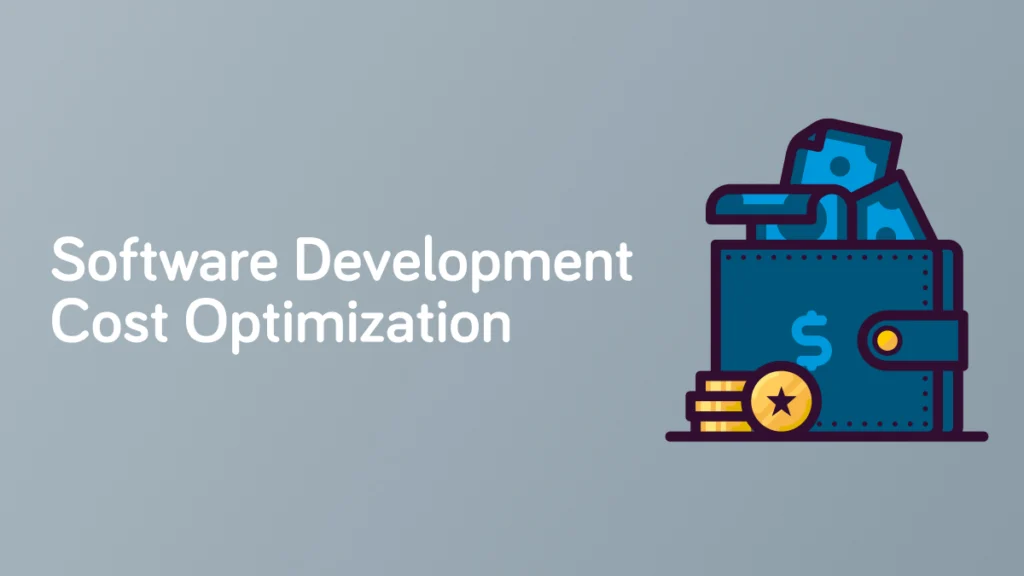
Optimizing software development costs is crucial for businesses to ensure efficient resource utilization, meet budget constraints, and enhance overall profitability. Here are several strategies to help you optimize software development costs:
1. Define Clear Objectives and Requirements:
- Detailed Project Planning:
- Clearly define project objectives, scope, and requirements during the planning phase.
- A well-defined project scope helps in avoiding scope creep and unnecessary development efforts.
2. Agile Development Methodology:
- Iterative Development:
- Adopt Agile methodologies for iterative development.
- Break down projects into smaller, manageable sprints, allowing for flexibility and adjustments based on changing requirements.
3. Open Source Technologies:
- Leverage Open Source Software:
- Utilize open-source technologies and frameworks to reduce licensing costs.
- Open-source solutions often have large communities, providing support and frequent updates.
4. Outsourcing and Offshoring:
- Cost-Effective Outsourcing:
- Consider outsourcing non-core or specialized tasks to cost-effective development teams.
- Explore offshoring options to access talent at lower labor costs.
5. Cross-Training and Skill Development:
- Cross-Training Teams:
- Cross-train team members to have a broader skill set.
- This reduces the dependency on specialized roles and allows for a more flexible team structure.
6. Continuous Integration and Deployment (CI/CD):
- Automated Testing and Deployment:
- Implement CI/CD pipelines to automate testing and deployment processes.
- Automated processes reduce manual efforts, improve efficiency, and minimize errors.
7. Cloud Computing:
- Infrastructure as a Service (IaaS):
- Utilize cloud computing services for scalable infrastructure.
- Cloud services allow you to pay for resources as needed, avoiding the costs associated with maintaining physical servers.
8. Optimize Development Tools:
- Choose Cost-Effective Tools:
- Select development tools and platforms that align with your budget.
- Evaluate both open-source and commercial tools to find cost-effective solutions.
9. Flexible Staffing Models:
- Use Flexible Staffing Models:
- Consider flexible staffing models, such as hiring contractors or freelancers for specific tasks.
- Adjust team sizes based on project requirements.
10. Risk Management:
- **Identify and Mitigate Risks Early:** - Conduct thorough risk assessments during project planning. - Address potential risks proactively to prevent costly issues later in the development process.
11. Prioritize Features:
- **Focus on Core Features:** - Prioritize features based on business value. - Concentrate development efforts on core functionalities before adding additional features.
12. Documentation and Knowledge Sharing:
- **Thorough Documentation:** - Ensure comprehensive documentation of code, processes, and architecture. - Documentation aids knowledge sharing and helps prevent delays caused by knowledge gaps.
13. Quality Assurance:
- **Invest in Quality Assurance:** - Implement robust testing practices to catch defects early in the development cycle. - Reducing the number of bugs and rework helps control costs.
14. Monitor and Analyze Metrics:
- **Use Development Metrics:** - Implement metrics to monitor and analyze development processes. - Metrics can help identify bottlenecks, measure team efficiency, and optimize workflows.
15. Customer Feedback and Iterative Development:
- **Continuous Customer Feedback:** - Involve customers throughout the development process to gather feedback. - Use iterative development to make adjustments based on real-time feedback, reducing the risk of costly changes later.
16. License Management:
- **Monitor Software Licenses:** - Keep track of software licenses to ensure compliance. - Avoid unnecessary costs associated with license violations or over-purchasing.
17. Energy Efficiency:
- **Energy-Efficient Development Practices:** - Encourage energy-efficient practices in development environments. - Turn off unused servers and equipment to reduce energy costs.
18. Employee Training and Retention:
- **Invest in Employee Training:** - Support ongoing training for team members to enhance skills. - Retaining skilled employees avoids recruitment and onboarding costs.
19. Benchmarking and Cost Comparisons:
- **Regular Benchmarking:** - Periodically compare development costs against industry benchmarks. - Benchmarking helps identify areas for improvement and cost-saving opportunities.
20. Post-Release Monitoring and Optimization:
- **Continuous Improvement Post-Release:** - Monitor software performance post-release to identify areas for optimization. - Iteratively improve the software based on real-world usage and feedback.
By implementing these strategies, organizations can optimize software development costs while maintaining high-quality standards and meeting project objectives. A proactive approach to cost management throughout the software development life cycle contributes to overall efficiency and business success.